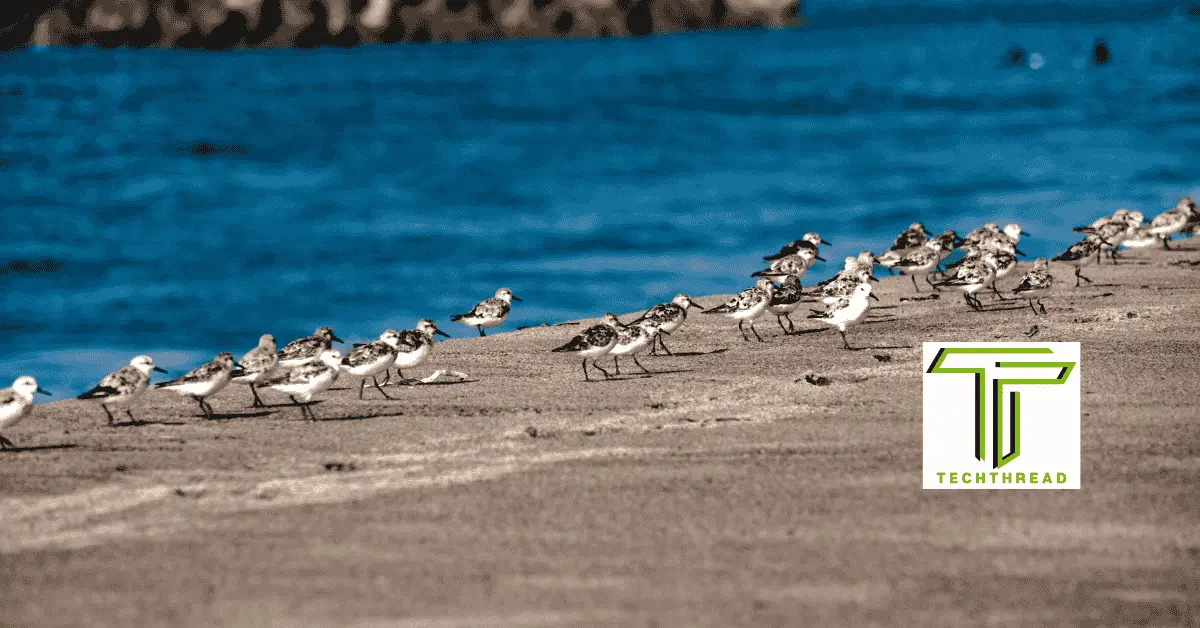The Ultimate Guide to Shore Birds of Italy: Best Spots & Seasons
Southern Italy is one of Europe’s premier destinations for nature lovers and birdwatchers, offering unparalleled opportunities to observe the diverse shore birds of Italy. The region’s varied coastal habitats support both migratory and resident species, making it a true paradise for enthusiasts.
However, many birdwatchers find it challenging to identify these birds or choose the right time and place for observation. This guide will help you understand the coastal ecosystems, highlight key bird species, and provide expert tips to enhance your birdwatching experience.
Table of Contents
Why Southern Italy Is a Prime Destination for Shore Bird Watching
The coastal regions of Southern Italy boast a range of habitats that attract an impressive array of ocean and shore birds. From brackish lagoons and estuaries to rocky cliffs and mudflats, these ecosystems serve as critical feeding and nesting grounds for both common and rare species.
What makes the shore birds of Italy particularly special is the unique intersection of migratory routes that pass through the Mediterranean. This means that during spring and autumn, the southern coast becomes a hotspot for birdwatchers hoping to catch glimpses of transient species en route to or from Africa. The biodiversity of this region ensures that every visit can bring new and exciting sightings.
Top Coastal Birdwatching Locations in Southern Italy
Exploring the best birding regions is essential for anyone serious about observing shore birds of Italy in their natural environment. One of the top destinations is Puglia, where wetlands and salt flats attract large populations of migratory birds, especially during seasonal transitions.
Calabria offers dramatic rocky shorelines, which are ideal for spotting seabirds such as gulls, cormorants, and terns. Moving to Sicily, the coastal marshes host numerous wading birds, thanks to their abundant food supply and protected status. Finally, Campania features vast wetlands that welcome iconic species like flamingos, stilts, and avocets.
Each of these regions offers a different ecosystem, increasing the diversity of shorebirds you’re likely to encounter.
Best Birding Hotspots to See Shore Birds of Italy
Several protected areas and natural reserves across Southern Italy are renowned for their thriving bird populations and visitor-friendly amenities. Saline di Margherita di Savoia, located in Puglia, is Europe’s largest salt pan and a magnet for species like avocets and stilts.
These shallow flats provide ideal foraging grounds for many shorebirds. In Sicily, the Vendicari Nature Reserve stands out as a crucial stopover point for migratory birds, offering sightings of flamingos, spoonbills, and black-winged stilts. Lamezia Terme’s wetlands in Calabria are another important habitat, especially for seabird nesting.
In Campania, the Castel Volturno Reserve presents a rich mosaic of ecosystems that support a wide range of shore birds year-round. Each of these hotspots is vital to the lifecycle of many species, making them perfect destinations for birdwatchers.
Most Common Shore Birds of Italy: Species to Watch
The shores of Southern Italy are teeming with birdlife, and several species stand out due to their distinctive features and behaviors.
| Bird Name | Scientific Name | Key Features |
|---|
| Common Redshank | Tringa totanus | Bright red legs, sharp call, often found in marshes and mudflats |
| Little Stint | Calidris minuta | Tiny, active wader, usually seen in shallow wetlands |
| Black-tailed Godwit | Limosa limosa | Long bill, elegant plumage, graceful movements |
| Sanderling | Calidris alba | Energetic beach runner, often seen chasing waves along the shore |
| Grey Plover | Pluvialis squatarola | Bold black-and-white breeding plumage, found in coastal areas |
| Dunlin | Calidris alpina | Forms large flocks, common in tidal zones and estuarine mudflats |
| Oystercatcher | Haematopus ostralegus | Black and white body, striking orange beak, seen along rocky and sandy shores |
| Whimbrel | Numenius phaeopus | Long curved bill, distinct whistling call, prefers coastal wetlands |
| Ruff | Philomachus pugnax | Known for elaborate mating displays, variable plumage, seen in wetlands |
Best Seasons to Spot Shore Birds in Italy
Understanding the seasonal patterns of shore birds in Italy can greatly improve your birdwatching success. The spring months (March to May) mark the arrival of migratory species from Africa, making it one of the most productive times for sightings.
During autumn (September to November), many birds make their return journey south, offering another excellent opportunity for observation. While winter (December to February) is quieter, several resident and overwintering shorebirds remain active along the coast, including species like Sanderlings and Redshanks.
For the best experience, plan your outings during early mornings or late afternoons, when birds are most active and lighting conditions are ideal for photography and viewing.
Conservation of Shore Birds of Italy: How You Can Help
Protecting the habitats and populations of shore birds of Italy is a top priority for conservationists and local communities. Key efforts include the creation and maintenance of protected nature reserves such as the Po Delta Park and Vendicari Nature Reserve, which offer safe breeding and feeding areas for endangered species.
Environmental regulations under European Union directives help minimize habitat destruction and pollution in sensitive wetlands. Additionally, scientific research and monitoring programs track migratory patterns and population trends to inform conservation strategies. Birdwatchers can contribute by following local guidelines, avoiding disturbance of nesting sites, and participating in citizen science projects like bird counts and data reporting.
By practicing ethical birdwatching, you play a direct role in preserving the rich diversity of shorebirds across Italy.
Final Thoughts on Observing Shore Birds of Italy
Whether you’re an experienced birder or a curious traveler, Southern Italy offers an extraordinary opportunity to witness the captivating beauty of shore birds in their natural habitats. From the salt flats of Puglia to the coastal marshes of Sicily, each region presents a unique landscape teeming with avian life.
With the right timing, some basic knowledge of bird species, and a deep respect for nature, your birdwatching adventure can be both enriching and impactful. Embrace the serenity of the coast, bring your binoculars, and experience the magic of discovering the incredible shore birds of Italy.
Frequently Asked Questions (FAQs)
Q1: What is the best time to observe shore birds of Italy?
The best times are spring (March to May) and autumn (September to November), when migratory birds pass through. Winter also offers excellent sightings of resident shorebirds.
Q2: How do I identify different shore birds in Italy?
Identification is easier by observing the bird’s size, bill shape, plumage, and behavior. Carrying a field guide or using birdwatching apps can significantly enhance accuracy.
Q3: Are shore birds of Italy protected by law?
Yes, many species are protected under EU conservation directives and are found within designated protected areas like nature reserves and wetlands.
Q4: Can I see rare shore birds in Italy?
Absolutely. Visiting key spots like the Vendicari Reserve and Po Delta Park greatly increases your chances of spotting rare and migratory shorebirds.
Q5: Where are the best places to watch shore birds of Italy?
Top birdwatching locations include Saline di Margherita di Savoia, Vendicari Nature Reserve, Lamezia Terme Wetlands, and Castel Volturno Reserve, all offering rich biodiversity and excellent viewing opportunities.
Also Read: Sound of an Angry Grunt NYT – Decoding This Tricky Crossword Clue







